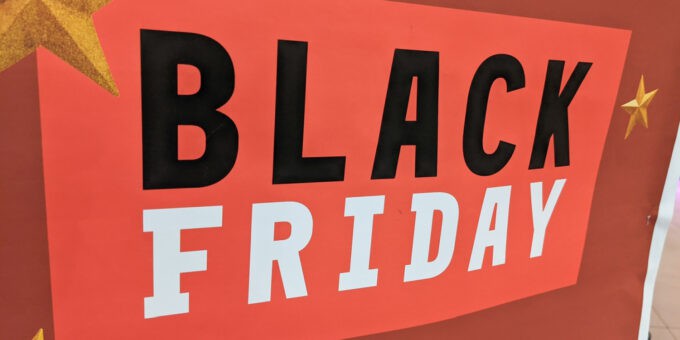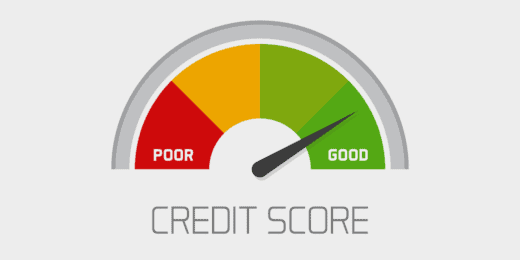Black Friday is just over a week away – is your business ready? The biggest sales event of the year falls on Friday 24th November 2023. However, its scale nowadays means that it stretches across the weekend and into Cyber Monday (27th November) for extended offers and last-minute deals.
The event was initially introduced to the UK in 2010 by the retail giant Amazon. It started by offering shoppers unmissable discounts, primarily on high-ticket items. Fast-forward to today and it’s now a competitive weekend where a variety of brands, industries, and products take part, offering customers some of the biggest discounts on the market.
With just a few days left, this post will provide a last-minute checklist to help get your business ready for Black Friday 2023. We’ll highlight some of the key areas that you should be prepared for, as well as how to form a contingency plan in the event of potential risks and challenges.
Prepare your website for the traffic uplift
Black Friday is the busiest sales period of the year. With some of the largest discounts around in these few days, your website and app traffic is likely to be at its highest. So, it’s vital to make sure that your site can handle the potential surge in online visitors.
It’s easy to assume that everything is as it should be, but some of these most basic components that are fundamental to your customer’s experience can be easily overlooked. As a result, your Black Friday success could be jeopardised. For example, slow loading speed is one of the main culprits of abandoned online visits.
According to research by strategy and research company Aberdeen Group, a loading delay of just one second can cause 5-6% of your online visitors to leave. A delay of two seconds can lead to 7% of desktop and 14% of mobile sessions being abandoned, and a three-second delay could cost you up to 21% of potential customers.
Not only could a high bounce rate hurt your Black Friday sales, but it could also cause long-term damage, by creating a negative brand perception and discouraging potential new customers from returning.
Benchmarks to consider
If this is your first Black Friday, it’s difficult to know what to aim for, to make sure that you’re site is ready for a demand uplift. According to Google, the three web vitals to monitor are:
- Largest Contentful Paint (LCP) – This measures your loading performance. For optimal results, your page should load within 2.5 seconds. Anything below 4 seconds needs improving.
- First Input Delay (FID) – This metric checks how quickly users interact with your site from the moment they land on your page. A good FID should be at 100 milliseconds or less. Anything above 300 needs improving.
- Cumulative Layout Shift (CLS) – CLS determines how quickly your webpage elements (such as images and buttons) appear as visitors explore different areas of your site. For good user interaction, your page should score 0.1 or below. A CLS of 0.25 or more needs attention.
Google’s free PageSpeed Insights tool can help you run the above tests and check how your site performs on both desktop and mobile. It’s particularly important to check and correct these areas if you have active sponsored ads on your Black Friday deals. If your site isn’t optimised for an easy customer journey, you could be wasting money on digital advertising.
As well as the above, you can also make simple, manual checks to make sure that your discount codes are working, and that your Black Friday stock is clearly labelled and easy to find.
Remember that your website could be your customer’s main gateway to your products. Those who can’t make it to your physical store over the Black Friday weekend will rely on your online presence to bag your best offers. So, it’s crucial to make sure that your site is running smoothly and efficiently.
Stay in touch
You should have started spreading the word about your upcoming Black Friday activity a few weeks ago. Now, don’t forget to keep up the momentum right up to and throughout the sales weekend.
Your customers want to know that the offers they have been looking forward to will still be available, and as the event progresses, they’ll want to know what’s still to come. One of the most powerful ways of staying in touch is through email updates.
In their Cyber Week 2022 Consumer Trends study, performance marketing agency Wunderkind shared that email communication becomes more important in the run-up to Black Friday. When compared to a non-promotional period, they found that:
- Emails generated a 55% uplift in web session contributions
- Emails contributed 34% in revenue uplift during the Black Friday weekend
Another effective method is SMS (text) communication. The study recorded a dynamic +78% in web session contributions and +28% in revenue contributions from text messages versus a standard sales period. This year, this can be an excellent technique to break through marketing congestion, reach your audience instantly, and keep your messaging differentiated.
With Black Friday just around the corner, shoppers are expecting alerts and news about the best deals – both from companies they love and trust, as well as new brands they’re willing to try. This anticipation and pre-existing interest makes Black Friday marketing incredibly powerful.
But the benefits of last-minute communication stretch beyond that. While keeping your customers informed and maintaining excitement is important, it also helps prolong your brand presence and relevance in the intense competition.
Reflect urgency
When planning your communication angle, try to reflect urgency in your language where appropriate. In these last few days (and mid-event), a fear of missing out (FOMO) can help you secure additional clientele.
For instance, if you won’t be offering similar deals again, you can maximise your sales by stressing that these are limited-time offers. Perhaps the stock is low on your promotional particular items – make it clear that once it’s gone, it’s gone.
A simple way to do this is to use time-sensitive keywords, such as “now”, “this weekend only”, “limited”, “be quick”, and “don’t miss”.
The intention is to express that your offers are available for these few days only. Provided that that is true, your last-minute marketing should reflect this urgency, to entice shoppers to make the most of your offers.
Schedule your communication
No matter which method you choose, there are several scheduling apps that can help you do so in the most efficient way. Here are some of the best SMS and email marketing software for small businesses:
- HubSpot: free to start and contains a range of advanced email automation features.
- Brevo: an all-in-one, simple software that automates both email and SMS (including WhatsApp). Free and paid plans are available depending on your needs.
- TextMagic: Top-rated platform with mass-texting, email, and reporting capabilities. Customise your plan based on your usage and marketing needs.
- Close: One of the easiest SMS marketing platforms to use, with integration options for your existing software. Free trial available.
Automating your Black Friday communication is a great way to stay organised. It also helps make sure that your marketing is actioned on time and avoids the need to make time for manual posting, which can otherwise be easily missed.
Make a contingency plan
With the big event just around the corner, you want things to run as smoothly as possible. But problems can arise, so it’s paramount to be prepared for worst-case scenarios.
Here are some key complications to anticipate and how to mitigate their risks:
Technical malfunctions
System malfunctions like website or app crashes are one of the most common technical problems that a business could face during such busy periods. The extent of the issue depends on the traffic you’re expecting and your current software capabilities.
Your website could fail due to traffic spikes. If this happens, your visitors will see a ‘503 error’ message. This means that the server is overloaded. To avoid this, you could upgrade your server plan to a larger capacity, or look into getting an additional server, so that if one fails, you have a backup.
If the crash is abnormal, this could indicate a cyberattack, which is another common potential risk to watch out for. Technology solutions firm Impact announced that small retail businesses are 50% more likely to be targeted by cybercriminals than large enterprises during Black Friday and Cyber Monday. A staggering 73% of companies are not ready for a cyberattack. A lack of preparation be extremely costly and have devastating repercussions.
One way you could prepare for both of the above risks is by making use of comprehensive performance and security platforms like Cloudfare. These secure your site, products, and your employees’ connectivity to internal systems. They also help improve your digital performance and reliability, as well as offering individual solutions like virtual waiting rooms for high-traffic periods.
Discount codes not working
If your promotions are coupon-based, make sure they are correct and working before Black Friday. Discount codes that do not apply at checkout are very common. This can cause an irritating and off-putting user experience, which may lead to lost sales.
While discounts can be a powerful way of securing loyal customers, they can also lead to potential customers being lost. A cart abandonment report by digital marketing platform Drip found that nearly half of consumers do not complete their purchase due to broken discount codes. So, it’s vital to make sure that:
- You’re sharing the correct codes in your marketing
- Any product or condition exclusions are clearly communicated
- The codes are working when applied
- Their validity will last throughout the entirety of the Black Friday weekend
A simple way to look into this is to do a manual check. Simply add a qualifying product to your basket to see if the checkout experience is smooth and easy.
In case any problems arise later, it’s worthwhile having a customer service team available to help anyone who has trouble using your website or offers. Perhaps run a training session with them to make sure everyone is briefed on how to deal with coupon malfunctions, and how to handle customer queries over the Black Friday weekend.
Supply chain disruptions
At this stage, you should have a projection of how many units of each product you might expect to sell. However, your business could encounter supply chain disruptions along the way, impacting your ability to produce inventory and fulfill orders.
This could be caused by materials shortages, supplier failures, trade regulations, and even extreme weather restrictions. But with so many unforeseeable challenges, how can your small business ensure a resilient supply chain for Black Friday?
Useful solutions here would be to widen your supply network and have a backup supplier on board. That way, whether it’s a localised or large-scale issue, you have a suitable contingency plan that means you can continue to deliver products to your customers.
However, with only a week left until Black Friday, this may not be a realistic option. Alternatively, you could consider using management software to monitor your inventory, logistics, and warehouse operations.
Providers like SKULabs and Netstock offer automation and control over your stock and supply processes. They use enterprise resource planning (ERP) to process data and deliver smart supply chain recommendations, to help improve your logistical management, planning, and efficiency.
Having these systems in place before Black Friday is a great way to have visibility over your production and supply processes. This can help make the demand more manageable and minimise the chance of delays.
Financial risks
Finally, you should prepare for potential financial risks that may impact your company’s Black Friday success. This could involve uncontrollable events like market downturns.
The ongoing cost-of-living crisis is a dominating economic factor that will be impacting shoppers’ buying power this Black Friday. A 2023 consumer trends study by the price comparison site, Finder, revealed that 45% of Brits plan to cut their Black Friday spending this year. The main reason for this is to look after their financial well-being. Overall, consumer spending is predicted to drop by £900 million compared to last year.
What does this mean for your small business? It’s crucial to monitor the market trends and predictions, so that you can adjust your Black Friday strategy accordingly. Factors like the cost-of-living crisis and stubbornly high-interest rates all reduce your customers’ buying power. In turn, this directly impacts your revenue prospects across the promotional weekend.
In preparation for a situation like this, the best way to stay on top of things is to keep up with market movements. Tune into current affairs to stay up-to-date with the latest updates on inflation, what other businesses are doing, and how they’re navigating these changes.
You can then adapt your sales strategy accordingly. For example, if high inflation means that shoppers are prioritising essentials, you could run promotions on lower ticket items to make your deals more accessible.
Competitive pressure
Another area to consider is the pressure to match the discounts offered by bigger brands. Competition is fierce when customers are looking for the cheapest prices, but small businesses often can’t afford to reduce their end costs as much as large companies.
Typical Black Friday reductions range from around 20% to as high as 35%. As tempting as it may be to compete with high discounts, it’s vital to monitor your profit margins and make sure that your pricing strategy does not lead to a loss.
Remember that promotions don’t have to involve straightforward price cuts – there are many different discount structures that you can use to attract customers and offer great deals. Other than traditional percentage sales, you could try:
- A free gift with a purchase
- 2 for 1
- Bundle discounts
- Receive a voucher after sharing a review of your products/brand
- Limited-time free shipping
- Referral discounts
- Trade-in offers
Finally, another option is to vary your timing. While your competitors may introduce their offers on 24th November, you can beat the rush by introducing early or extended deals. Your brand will stand out from the crowd, as you service eager shoppers and those who may have missed the main event.
Wrapping up
There are so many different areas to think about when prepping your business for Black Friday. The biggest sales event of the year can put pressure on small brands, and it can be difficult to navigate the competition as well as the intense consumer expectations. But there are many options for small businesses to explore and enjoy a successful Black Friday.
We hope that our checklist has been helpful in finding the best tips and advice for your business as we approach Black Friday 2023. If you have any guidance or recommendations to share with us and other business owners, please post them in the comments below.
Please note that the information provided in this article is for general informational purposes only and does not constitute legal, tax, or professional advice. While our aim is that the content is accurate and up to date, it should not be relied upon as a substitute for tailored advice from qualified professionals. We strongly recommend that you seek independent legal and tax advice specific to your circumstances before acting on any information contained in this article. We accept no responsibility or liability for any loss or damage that may result from your reliance on the information provided in this article. Use of the information contained in this article is entirely at your own risk.
















Join The Discussion